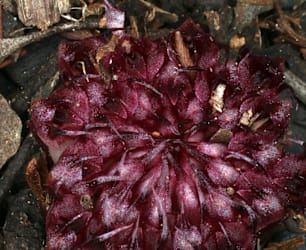The other day I was asked to identify some ‘christmas beetles’ seen at Stanwell Park. There was a photograph – they were brightly coloured and it was Christmas, so why not christmas beetles?
This is an example of the insect:

I could see instantly that the ‘beetle’ was a bug. Hopefully some of you also know it’s not a beetle, but why? What makes a bug (or a beetle), and how do we classify insects generally?
There are three things in this photo that set off ‘beetle’ alarm bells. Firstly there are no wings, not even the modified upper wings which sheath the lower wings and upper abdomen and which define adult beetles. So this cannot be an adult beetle.
Here there are short lobes, which might become wings but they are fused to a triangular area in the middle. There are no larval beetles like this, but it’s normal in juvenile bugs.
Second, the antennae are thin but only 4 segmented – in adult beetles the antennae normally have 11 segments – if fewer the segments are thickened or fused together, never thin like this. So, not an adult beetle but could be a bug.
Third, the killer, the mouth is a long spike. This is the modified mouth and is never found in beetles but is de rigueur for bugs (the photo doesn’t show the mouth clearly – it’s that thin spike under the head going down to the bud).
Here for comparison is the complex mouth of a beetle – colour coded by the photographer so you can see all the bits. This is a normal insect mouth – it’s more or less the same in most types of insects, but butterflies and moths, bees, fleas, flies and bugs have diverged from this model.

The important bits are green – these are the mandibles, which do the actual chewing, the other bits are for identifying and playing with the food.
So beetles chew and bugs suck. Furthermore, bugs have ‘incomplete’ life cycles – there is no pupa, the young grow their wings as extensions of the thorax, by moulting regularly, so the juvenile looks like a wingless adult. Beetles have ‘complete’ life cycles with a larval stage that looks different from the adult, separated by the pupa.
As microscopy developed, major functional modifications like these were used for classifying the insects. From about 1995 the developmental molecules DNA and RNA have been used, providing much more powerful analysis. The classification worked out pre-DNA studies has largely held good post-DNA studies but there have been interesting discoveries – termites are just modified cockroaches, animal lice are modified plant lice. We may want it to be, but classification is never fixed in stone.
Further reading
See this identification guide with all the important bits of insects illustrated (it’s for Papua New Guinea but works for almost all Australian insects too).





